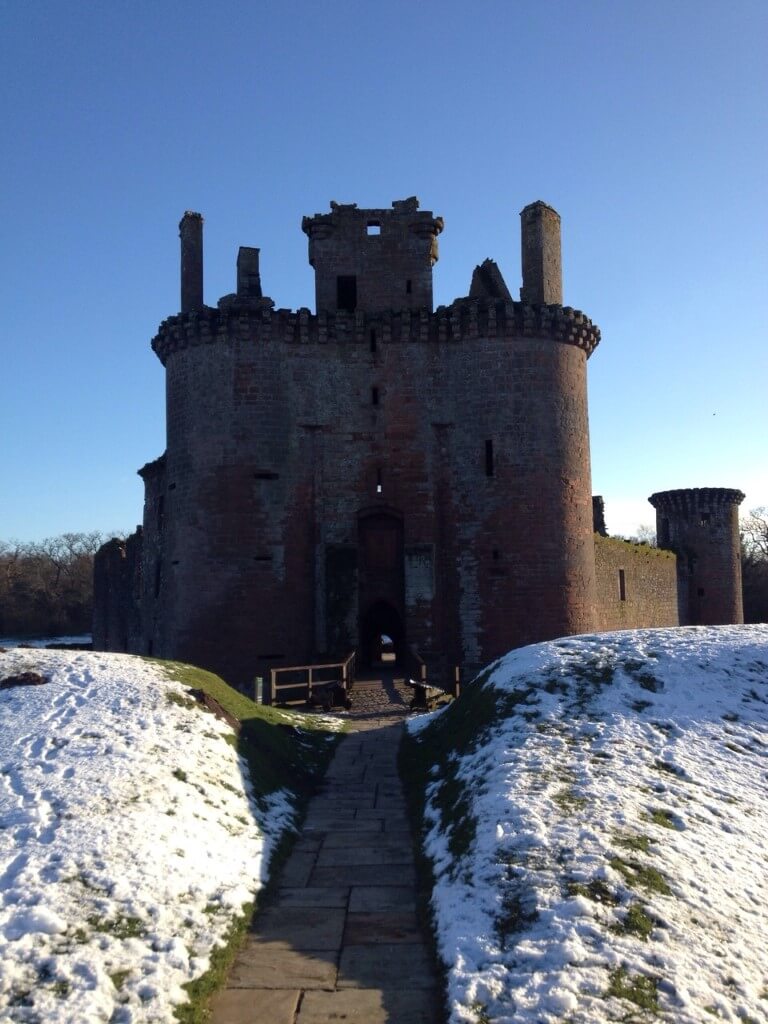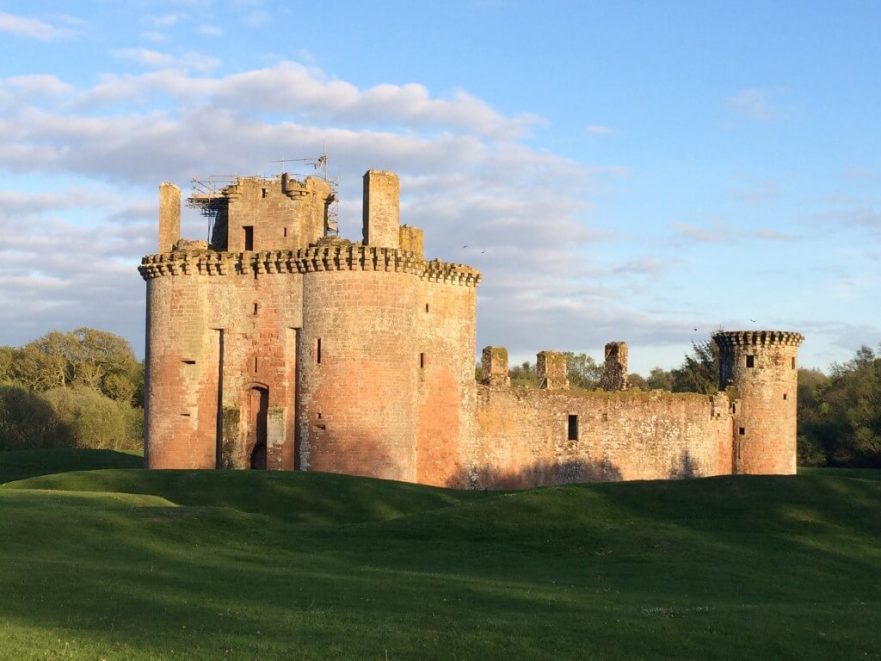One of our favourite places that we love to guide guests around at Solway Tours is the magnificent medieval stronghold of Caerlaverock Castle. Located on the Solway Coast just south of Dumfries this unusual equilateral triangular shaped castle is now ruined however Caerlaverock Castle had an extremely turbulent history. As the Castle was so close to the English coast it was involved in many conflicts especially during the Scottish Wars of Independence of the 13th and 14th Centuries.
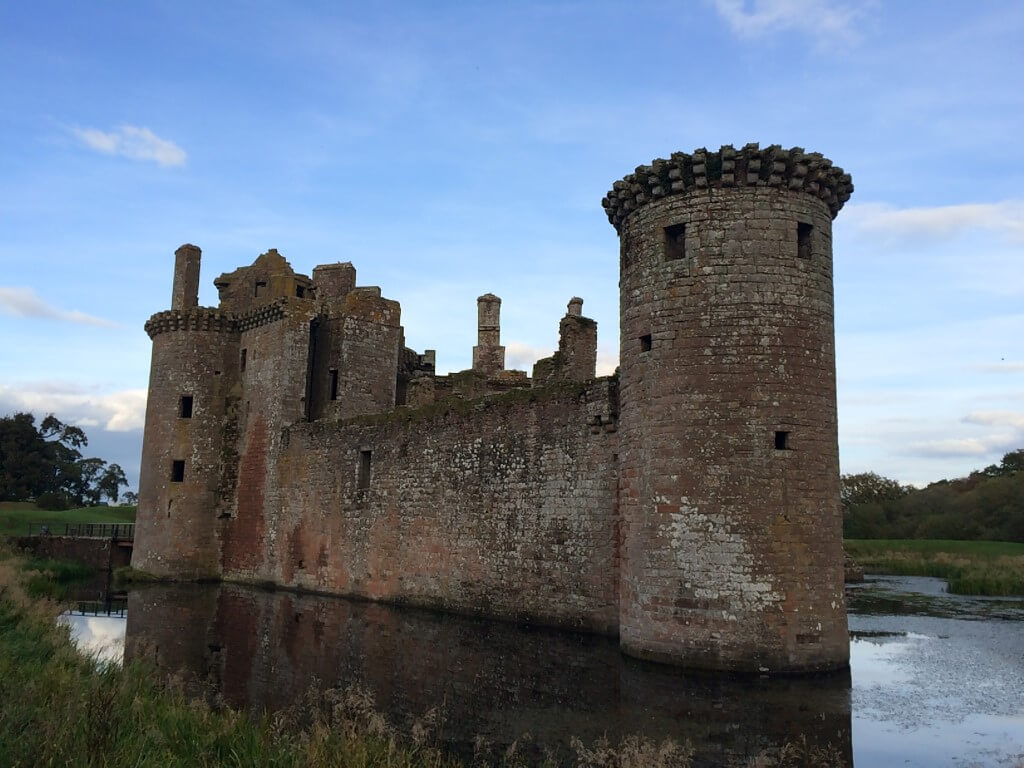
The first things that many people notice when approaching Caerlaverock Castle is its imposing double towered gatehouse, double moat and the Maxwell Coat of Arms proudly displayed above the entrance. What is not so obvious is that this was not the first castle built on this land and the original castle built by the Maxwells in 1220 can be reached by walking around the later castle and through the woods. Sir John Maxwell received the land at Caerlaverock around 1220 and this first castle built was one of the earliest stone castles in Scotland. Foundations marking out the area of this initial castle are all that now remain and its proximity to the Solway Firth does suggest that this castle had been prone to flooding and hence why just 50 years later the “new “ triangular Castle was built. By 1270 the Maxwells had constructed the magnificent defensive castle outline that you see today.
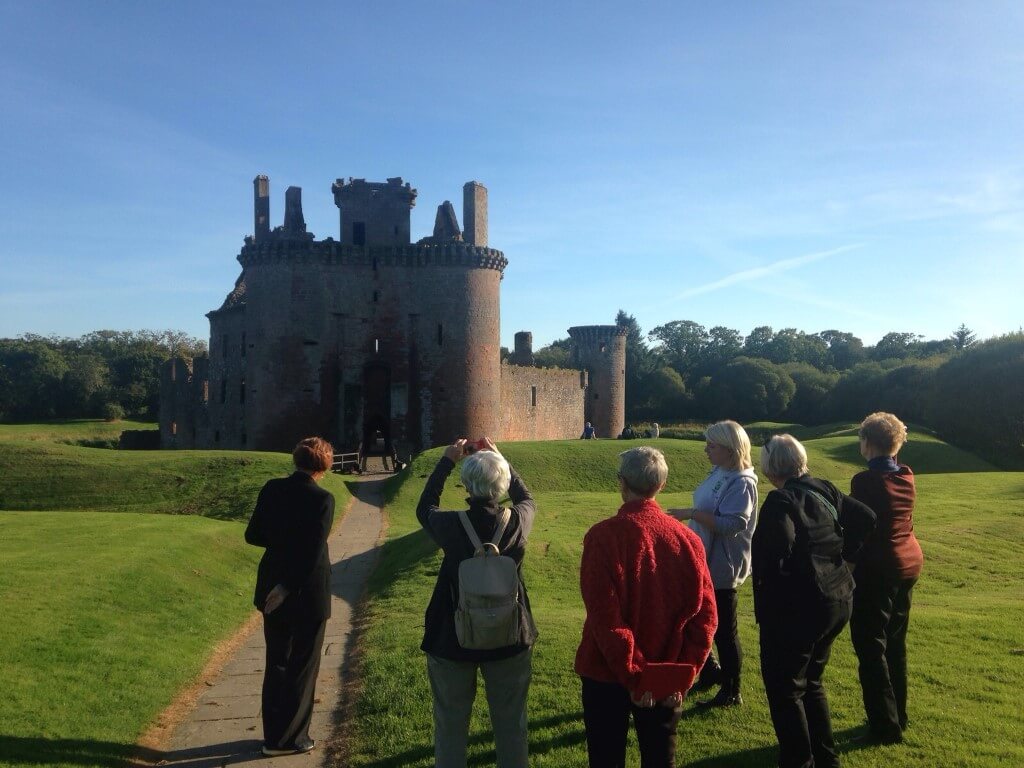
By 1300 the Castle was sieged by King Edward I of England in direct response to the garrison of Caerlaverock Castle attacking the English held Lochmaben Castle the year before. King Edward brought the full might of the English army including many sieges engines. Approximately 60 Scots under Lord Maxwell tried to hold the castle against Edward’s army of 87 knights and more than 3000 men but within a couple of days the small garrison had surrendered. From that point on and throughout the rest of the Wars of Independence this castle changed hands many times. Throughout the 14th and 15th Centuries the castle experienced much damage but by the 17th century, the Maxwells were created Earls of Nithsdale, and went on to build a new lodging within the walls, described as among “the most ambitious early classical domestic architecture in Scotland”.
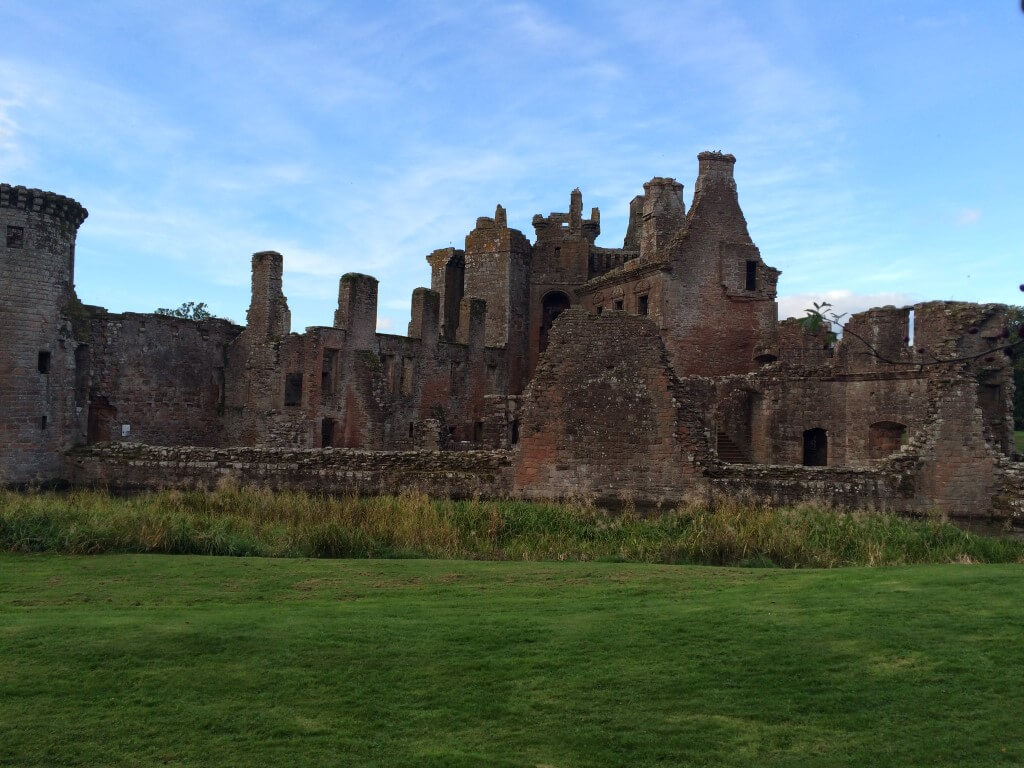
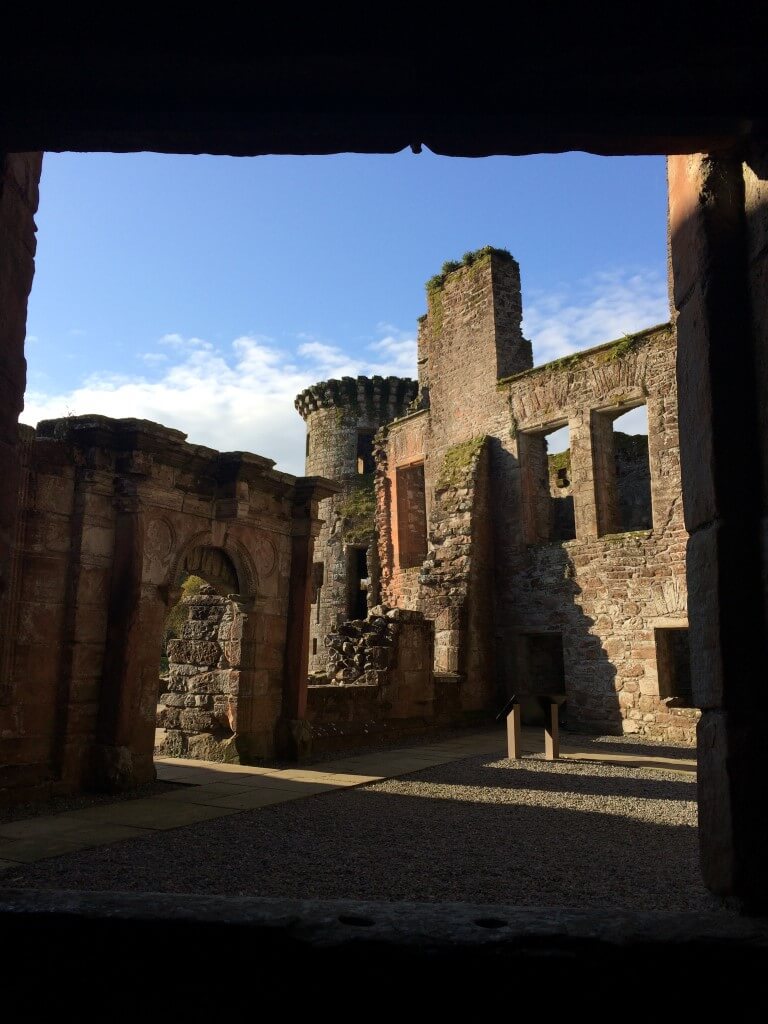
The Castles last siege was in 1640. It was brought about by Lord Maxwells adherence to Charles I in that monarch’s struggles with the Covenanters. The garrison held out for 13 weeks on this occasion before surrendering and the castle was then stripped of all its valuables and was no longer used. Caerlaverock Castle was eventually placed in State care and is now maintained by Historic Scotland.
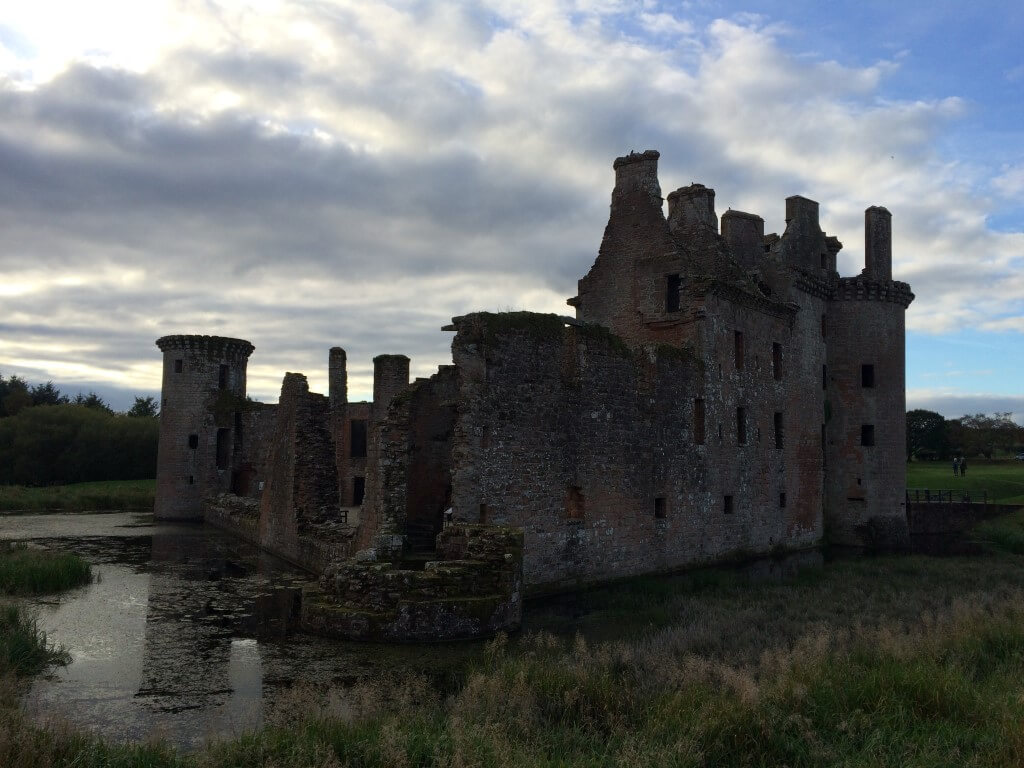
As well as being able to explore the magnificent ruins of the Castle visitors can also learn about siege warfare from an informative exhibition, enjoy some refreshments at the on-site café and purchase souvenirs from the gift shop. There is also a children’s play area and a nature trail and with the Castle located on the edge of the Caerlaverock Nature reserve this whole site has a lot to offer both locals and visitors to the region.
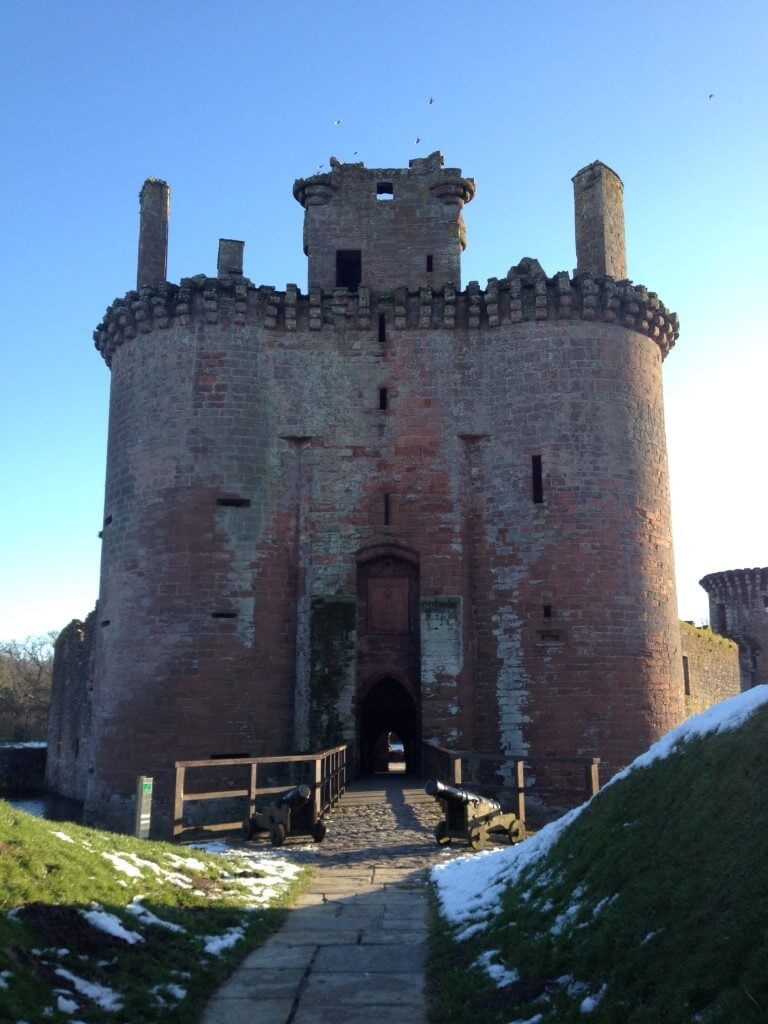
We have particularly enjoyed taking birthday parties to Caerlaverock Castle where exploring this magnificent ruin has been a favourite stop with our younger guests. Not only are we able to let the birthday girls explore the castle but there is also the opportunity to dress up like a princess! What little girl doesn’t want to be a princess in a castle for a day!!
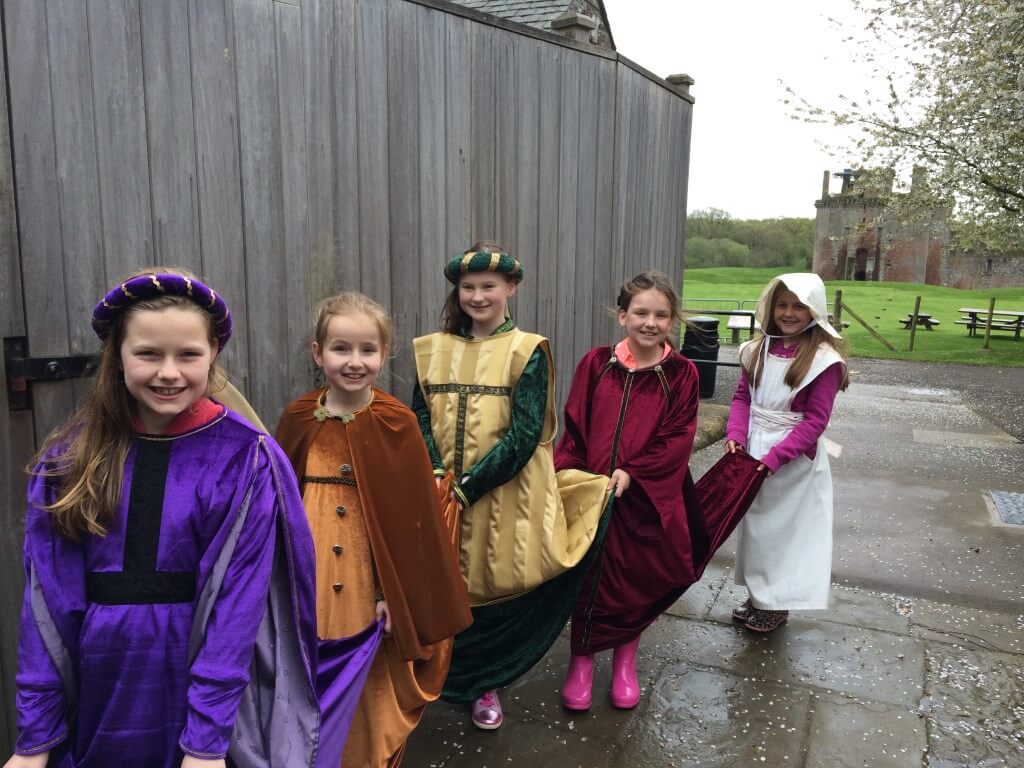
A fantastic site to visit and one that we are proud to include on many of our bespoke tours and we believe it is definitely one of Dumfries’ Historic Gems!
